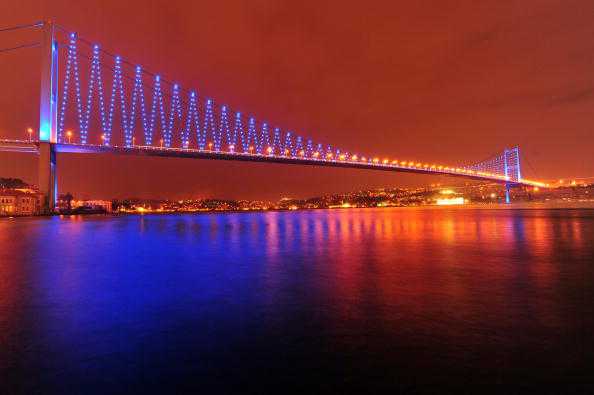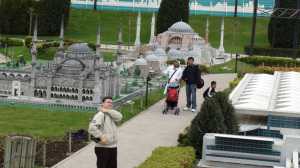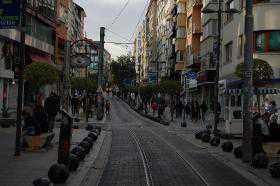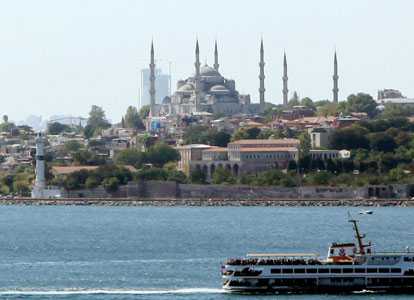An itinerary based around the jewels of the Mediterranean leaves Jonathan Grun with a lifetime of memories
Published: 13/11/2010
Sorrento, Italy
More PicturesIT HAD been a week of champagne, steak and lobster, but right now the tastiest thing on the menu was a carrot.
The slightly grubby vegetable nestling in the palm of my hand was being eyed up by a hungry horse. Seconds later, there was that moment of almost indescribable pleasure as its soft, warm mouth plucked the morsel away from me.
The horse had certainly earned its treat – it had just pulled a carriage and us through a vista of vineyards and sunflower fields, while a yellow Tuscan sun burned down from a bright blue sky.
We left him to enjoy a richly-deserved bucket of water, while we sampled some of the wines made at a nearby vineyard in rolling hills between Pisa and Florence. They were so good that a group of Americans had a stab at singing the Italian ballad Volare before the morning was over.
This was just one excursion during a 12-night cruise on board the Ruby Princess, as part of what could be described as the greatest cruise itinerary available anywhere in the world.
If someone asks you where you went on your holidays, it seems almost boastful to answer: Venice, Athens, Ephesus, Istanbul, Mykonos, Naples, Rome, Florence, Monte Carlo and Barcelona.
No wonder this route – or variations of it – is so popular with cruise travellers. You come home with enough memories to last a lifetime – and every destination provides a unique snapshot of a place or people.
It is impossible to forget the enchantment experienced on seeing Venice for the first time, Rome’s Colosseum or the ruins of Pompeii.
The Acropolis in Athens, the timeless beauty of Florence and the Leaning Tower of Pisa are also must-see destinations. And, for an insight into a different culture, visit Istanbul for Friday prayers.
Such a holiday also offers the chance to rub shoulders with a huge range of local people.
We left the Turkish port of Kusadasi on an official tour and wound our way past the historic ruins of Ephesus and up into the surrounding hills. There, we found a remote village where peaches were being brought to a busy market by farmers on rickety motorcycles.
Male stallholders, many sporting several days’ growth of beard, sat round shaded tables drinking apple tea and setting the world to rights in loud voices.
A week later, the Ruby Princess glided past millionaires’ yachts in the harbour at Monte Carlo. After a stroll up the hill to a casino, we paused on a baking-hot pavement by a blood red Ferrari and watched the super-rich floating by in air-conditioned limos.
The two settings were a world apart, but each in its own way provided a precious memory to file away.
The beauty of cruising is that you can visit so many varied places, but unpack only once.
Although seeing exotic locales is arguably the main reason for taking such a holiday, many people on the Ruby Princess preferred to spend a significant amount of time on board, too.
The 113,000-ton floating palace allows you to be active, or chill out; watch a movie under the stars, or read a book in the library, sit in a hot tub, or enjoy a show.
And, of course, you can eat.
It is a common misconception that cruises are about gluttony. You simply do not need to eat around the clock. However, when you do give in to temptation, on the Ruby Princess, it’s a rewarding experience.
We signed up to anytime dining, which meant we could use one of the three dining rooms whenever it suited us, rather than attending traditional sittings.
Some main dining room meals were simply brilliant – roast pheasant with caramelised onions was one of the highlights.
But, if you tire of formal eating, you can sit down at a sushi bar and watch your meal being prepared in front of you while you enjoy a glass of wine.
Alternatively, take a stroll and watch the sort of pizza you normally only dream of being prepared on deck.
Most food on board is included in the price of the holiday, but you are asked to pay a small supplement to dine at one of the two speciality restaurants. There is an Italian with a special tasting menu, and a grill where they serve gigantic lobsters and steaks the shape and size of Texas.
For the ultimate dining experience, however, pay a supplement and sit at the chef’s table. After a champagne aperitif, waiters serve a meal of serious opulence and extravagance.
OK, that does smack of gluttony – but you are on holiday and can repair the damage in The Sanctuary.
This is an exclusive area perched high up on the ship, where, after paying a small supplement, you can relax under a canopy which filters out the fiery midday sun.
Here, you can sip cucumber-flavoured water and eat light snacks, including gorgeous fresh fruit kebabs – the perfect antidote to any overindulgence.
Of course, the cuisine in the places you visit can also be fascinating, and once ashore you can head for places where delicacies we buy in the UK are actually produced.
All in all, cruising can provide unforgettable moments.
In the cool shade of a lemon grove in Sorrento, Italy, we watched a delightful lady named Rosa make mozzarella cheese.
It tasted unbelievably good; so much better than anything you can buy in almost any British shop.
Add a splash of olive oil from the ancient trees we wandered among on a gloriously sunny day in the Bay of Naples, and you have a true, once-in-a-lifetime experience.
TRAVEL FACTSJonathan Grun was a guest of Princess Cruises which offers 12 nights on board the Ruby Princess travelling from Venice to Barcelona via: Athens, Ephesus, Istanbul, Mykonos, Naples, Rome, Monaco and Livorno.
Prices for 2011 start at £1,649.
For reservations and further information, call 0845 3555 800 or visit www.princess.com
Read more: http://www.pressandjournal.co.uk/Article.aspx/1890366/?UserKey=#ixzz15FtdEujj
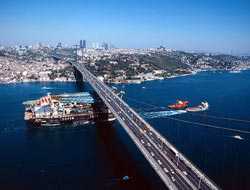 Istanbul was designated as the European Capital of Sport (ACES) for 2012.
Istanbul was designated as the European Capital of Sport (ACES) for 2012.
